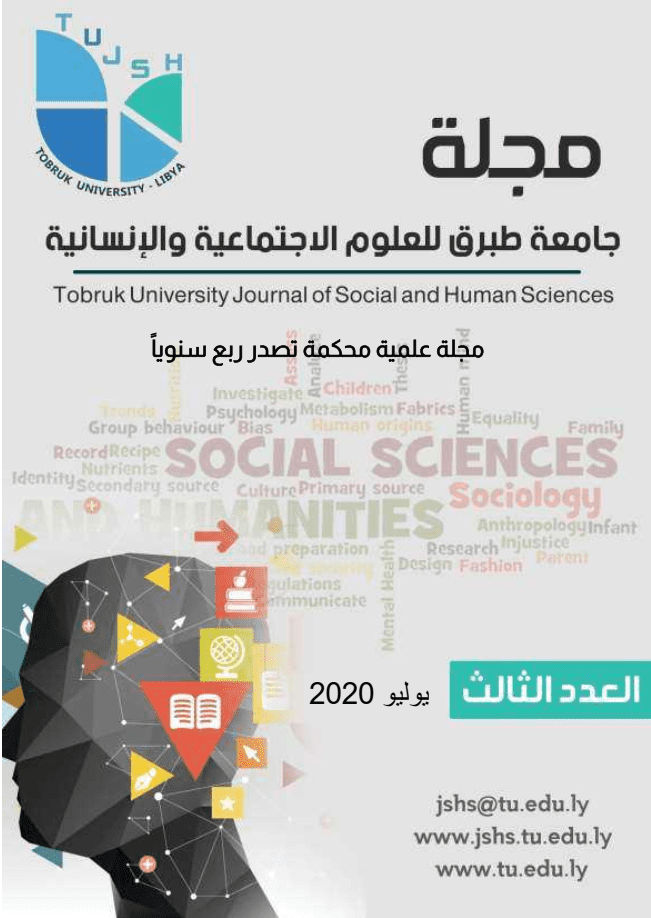The role of institutional digital repositories in the development of information technology In higher education
(case study)
DOI:
https://doi.org/10.64516/hkfzht47Keywords:
Open Access, Institutional Repositories, Academic LibrariesAbstract
there has been a lot of talk about modern models of scientific communication. Perhaps the reason is due to the rapid developments of media and communication technologies in general and the Internet in particular, as these technologies have opened new horizons in the field of publishing and scientific communication, where it was previously focused on and for a period of time.Scientific journals have had a long history and have recently been exposed to several economic and legal problems, as the high costs of scientific literature and restrictions on the availability and exchange of information resulting from The scientific publishing system of copyright and usage licenses has led researchers and academics to re-establishConsidering the management systems and operation of this system. Moreover, the emergence of the Internet and electronic publishing of scientific articles has not changed anything in the situation, as subscription prices to periodicals still exceed the budgets of libraries and research institutions.
References
1. Suber, Peter. 2005.Open Access Overview [en ligne], [consulté en mars 2009]. http:
2. //www.earlham.edu/~peters/fos/timeline.html
3. Chandra, H. 2008. Open access to knowledge resources in science and technology: The role
4. of digital reference service to facilitate accessing scholarly information. [en ligne],
5. [consulté en mars 2009]. http: //www.harishchandra.net
6. Hassen ,Sara. 2005.Open Access. [en ligne], [consulté en mars 2009].
7. www.jisc.ac.uk/publications
8. Canessa, Enrique. 2008. Science Dissemination using Open Access.[en ligne].Italia:
9. ICTP.[consulté en mars 2009]. http: //sdu.ictp.it/openaccess/book.html
10. Lynch, C.2006. Institutional repositories: essential infrastructure for scholarship in the
11. digital age.[en ligne]. ARL Bimonthly Report, 226 .[consulté en mars 2009]. http:
12. //www.arl.org/newsltr/226/ir.html
13. Ware, Mark. 2004. Pathfinder Research on Web-based Repositories, Publisher and
14. Library.[en ligne].Learning Solutions, London. [consulté en mai 2009].
15. Crow, R. 2002. The Case for Institutional Repositories: A SPARC Position Paper. [en ligne].
16. SPARC.[consulté en mars 2009]. http: //www.arl.org/sparc/IR/ir.html
17. Bailey, Charles.2005 .Open Access Bibliography: Liberating Scholarly Literature with E-Prints
18. and Open Access Journals.[en ligne] Association of Research Libraries, Washington: DC.
19. [consulté en mai 2009]. http: //www.escholarlypub.com/oab/oab.html
20. Foulonneau, Muriel. 2005. Assurer l’interopérabilité des systèmes documentaires. In :
21. Aubry, Christine (dir.). Les archives ouvertes : enjeux et pratiques : Guide à l’usage des
22. professionnels de l’information. Paris : ADBS. p.101.
23. Fyffe, Richard.2007. Scholarly Communication in a Digital World: The Role of an
24. Institutional Repository. [en ligne]. [consulté en mai 2009].
25. Kamila , Kanchan. 2009.Institutional Repository Projects in India.[en ligne]. « 7th
26. International CALIBER», Ahmedabad (india),12-14/03/2009. [consulté en mai 2009].
27. http: //www.inflibnet.ac.in/caliber2009/CaliberPDF/17.pdf.
28. Sukhwinder Randhawa. 2008. Open Source Software and Libraries.[en ligne] . [consulté enmai 2009].
29. https://drtc.isibang.ac.in/bitstream/handle/1849/190/OSS_for_libraries.pdf?sequence=2
30. http://www.academiccommons.org/library/institutional-repository
Downloads
Published
Issue
Section
License
Copyright (c) 2020 أ. عماد أبوبكر بالحسن زرقون، د. عمر صالح محمود جمعة، م. سيف الاسلام السنوسي علي مصباح (Autor/in)

This work is licensed under a Creative Commons Attribution 4.0 International License.








